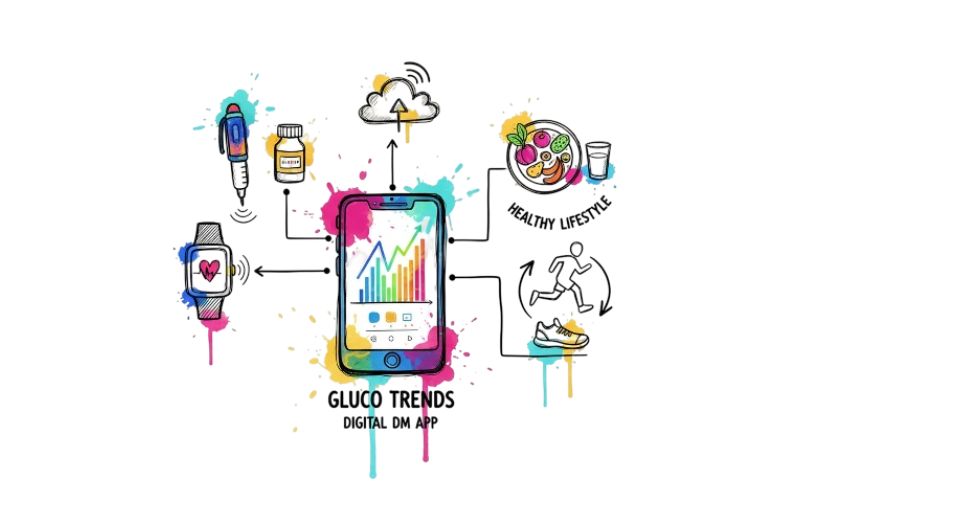
Sep 24, 2025

The global digital diabetes management market at its essence brings hardware like continuous glucose monitors and smart insulin pens together with software platforms that record, store, and analyze data. These platforms take raw data and turn it into actionable information, providing reminders, alerts, and trend graphs that simplify complicated health data and make it easier to use.
Care for diabetes has traditionally been characterized by the challenge of tracking, documenting, and reacting to changing blood glucose levels. Older ways of doing things, though effective, frequently require considerable effort, resulting in lapses in data and low compliance. Evolutionary lifestyles built around technology have also brought these inefficiencies to the forefront, necessitating smarter solutions as not only a nicety but a necessity. The digital diabetes management industry has filled the gap with a solution that simplifies monitoring, increases accuracy, and involves patients and healthcare teams in real-time in synchronization. By making easily accessible, automatic, and integrated tools available, it lowers many of the obstacles otherwise present with traditional management measures.
Daily life everywhere is becoming more influenced by digital technology, ranging from fitness monitors that nudge toward better health to apps that steer meal selection or track sleeping patterns. Within this larger context of digital convergence, the digital diabetes care market revealed by Metastat Insight is one that is redefining how people and healthcare professionals manage a multifaceted disorder. It is not only a technological leap ahead, but an indication of how digital care is seeping into daily life with ease, providing new means to keep ahead of health issues.
What distinguishes this method is that it can merge precision with ease, making data not remain in splendid isolation but become part of a greater universe with healthcare practitioners, caregivers, and even lifestyle applications. The worth is in establishing an ecosystem where choices are made from real-time inputs, minimizing uncertainty and enhancing day-to-day results.
Adoption of digital diabetes solutions was not an overnight phenomenon. Initial breakthroughs were greeted with wary interest, usually limited to a niche group of users. With time, incremental advancements in sensor stability, cell phone connectivity, and ease of use nurtured wider acceptance.
Landmarks including integration with smartphone platforms and the capability of synchronization across multiple devices represented breakpoints in visibility and utilization. Every forward step brought more confidence, progressing the market from niche applications into mainstream healthcare discussions. Recent developments have highlighted personalization, with platforms that adjust recommendations according to individual patterns, further integrating digital solutions into long-term care strategies.
Adoption has had distinct regional differences. Established healthcare systems with well-developed digital infrastructures have understandably been the early pioneers, such as having access to a significant number of connected devices and favorable regulatory environments. In comparison, emerging markets are only now gaining relevance as mobile penetration grows and healthcare ecosystems value efficiency and cost-effectiveness.
These markets have significant growth potential as demand grows for solutions that can fill the void between scarce clinical resources and expanding patient populations. Throughout established and emerging markets alike, the common thread is the same: digital integration as the path toward improved results and decreased burden on healthcare networks.
Although it has momentum, the digital diabetes management market is overcome by challenges that determine its current course. Expenses related to sophisticated devices can still be a deterrent, restricting access within specific populations. Interoperability and data privacy are also issues, especially as solutions move into more integrated ecosystems. Competition among different hardware providers and platforms adds complexity, as stakeholders must weigh innovation against compatibility. But with these challenges come great opportunity.
Artificial intelligence advances, wearable technology, and cloud-based analytics are creating new possibilities for precision care. Such collaboration between healthcare organizations and technology companies has the potential to improve integration, while penetration into underdeveloped areas presents a significant opportunity for long-term growth.
The larger backdrop of international health explains why this market has taken on such significance at this time. Increased focus on preventive care, sustainability in the delivery of healthcare, and digital transformation across sectors all come together here. The digital diabetes care market offered by Metastat Insight is both a reaction to a persistent health problem and a testament to the way that digital technology can transform the care of chronic disease more widely. Amidst a world where efficiency, accessibility, and long-term viability are high on the agenda, these solutions represent the direction of proactive, connected, and data-informed health approaches. Its path foretells more than growth in the market—it foretells a revolution in how medicine responds to the digital world, building the future of treatment and everyday life.
Drop us an email at:
Call us on:
+1 5186502376
+91 73850 57479